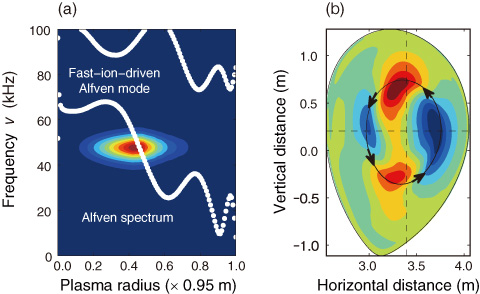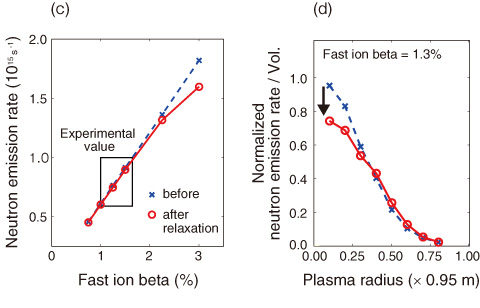
Fig.4-26 Properties of the fast-ion-driven Alfvén mode

Fig.4-27 Effect on the neutron emission rate
ITER is an experimental reactor intended to create the conditions required to sustain nuclear fusion reactions that can serve as a source of energy. It will confine deuterium-tritium plasmas at 100 million degrees Celsius and produce neutrons and helium ions via fusion reactions. The helium ions are born with a kinetic energy 100 times larger than that of the bulk plasma and are used to heat it via collisions. However, the fast helium ions move with a rhythm that is similar to that of plasma waves called Alfvén waves, so they dance together and exchange energy. If the waves reach large amplitudes, the fast ions are pumped out of the confinement region. Thus, it is important to evaluate the fast ion transport.
Together with the National Institute for Fusion Science, we conducted simulations of fast ion transport using HELIOS, a supercomputer operated by the International Fusion Energy Research Center. The simulation model was validated by simulating scenarios from the JT-60U fusion experimental device and by comparing the results with experimental data. To mimic the ITER conditions in JT-60U, energetic deuterium ions were introduced by powerful beams. The fast ions were observed to drive intensive cyclic bursts of Alfvén wave activity. Because the bursting phenomena depend on the form of the fast ion distribution in phase space, a novel method was developed that allows us to initialize simulations with fast ion distributions computed by an orbit-following Monte Carlo code for realistic beam geometry and collisions.
The simulation results show that the frequency and mode number of the instability, which triggers profile relaxation accompanied by the burst, are consistent with experimental observation (Fig.4-26). By varying the fast ion beta value, we obtained a value that reproduced the fast ion redistribution and the resulting changes in the neutron emission rate seen in experiments (Fig.4-27). In classical calculations, the total neutron emission rate is overestimated because Alfvén wave activity is not taken into account. Our simulations indicate that the true value of the confined fast ion beta is about a factor of two lower.
This work was partially supported by a Japan Society for the Promotion of Science (JSPS) KAKENHI Grants-in-Aid for Scientific Research (No.22860081, No.23360416, No.25820443).